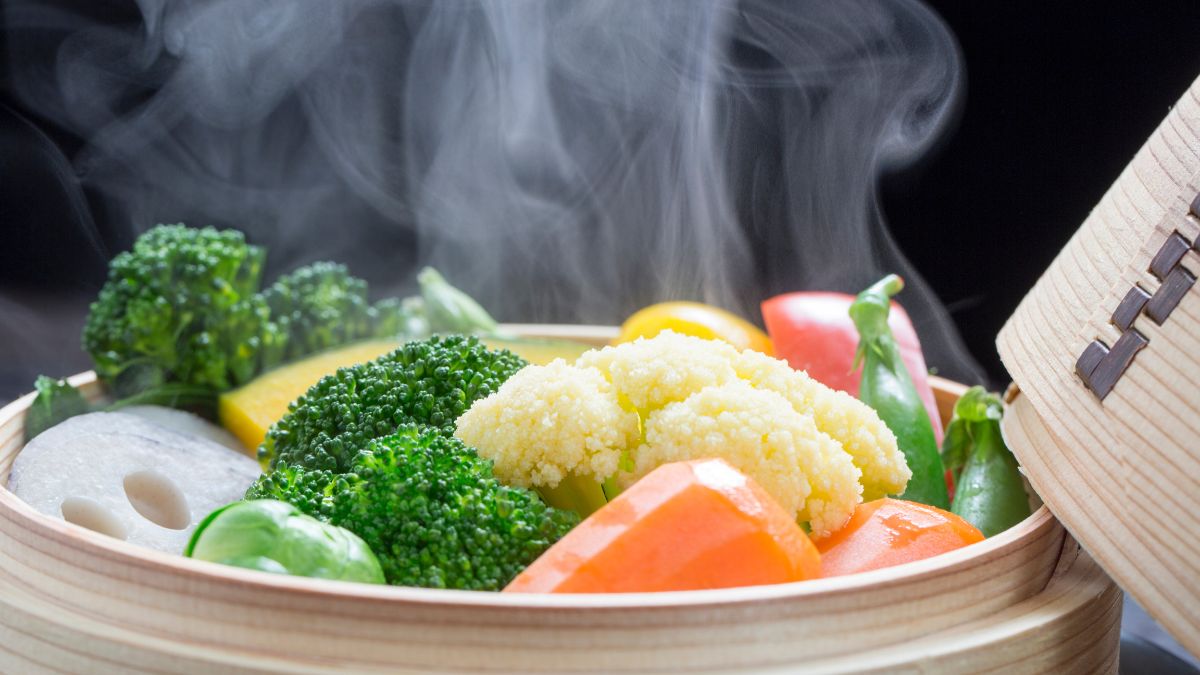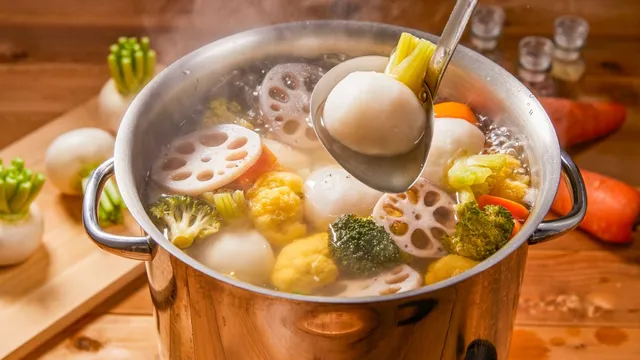- By Bornika Das
- Fri, 31 Oct 2025 01:02 PM (IST)
- Source:JND
Steaming Vs Boiling For Vegetables: There has always been confusion about whether to steam or boil the vegetables. Little do people know that this kitchen dilemma can make major differences in the taste and appearance of the vegetables, as well as the nutrients they deliver. While one method softens and comforts, the other keeps the veggies light and fresh. Boiling means full submergence of vegetables in water, while steaming uses vapour to cook the vegetables without actual contact with water. While both steaming and boiling are classic cooking techniques, many health-conscious cooks are in a debate over which of these methods retains more nutrients in vegetables that benefit the overall well-being.
What Happens When You Steam Vegetables
When vegetables are steamed, they are gently cooked with vapour rising from the boiling water and not coming in actual contact with water. The vegetables are placed above the liquid in a steamer basket or colander, and the steam softens them evenly without diminishing their flavour. As they don’t come in direct contact with water, most nutrients are preserved, especially the water-soluble vitamins such as Vitamin C and the B-complex group. This is the reason why steamed vegetables often look brighter and taste fresher.
Moreover, the greens also remain vibrant; for instance, the carrots turn deeper in colour and broccoli retains its satisfying crunch. Steaming helps to restore the natural sweetness of vegetables and gives them a clean and balanced flavour.
ALSO READ: 5 Healthy Cooking Methods To Enjoy Nutritious And Healthy Meals | Steaming To Grilling
While steaming, you can also add a few drops of lemon juice or a pinch of herbs to the steaming water. It subtly enhances both flavour and aroma without adding calories.
What Happens When You Boil Vegetables
Boiling is a simple and familiar method of cooking. However, in this one, the vegetables are completely submerged in hot water and are allowed to cook at 100 degrees Celsius until tender. It is fast, hassle-free and ideal for days when you are busy multitasking or cooking in bulk. During the boiling method, many nutrients are lost into the water. You can only retain the nutrients when you use the water in a soup, dal or curry.
Recommended For You

Steaming vs Boiling To Retain Nutrients In Vegetables (Image Credits: Canva)
Boiled vegetables often tend to become softer and when left for too long, they slightly become mushy or bland. This happens because boiling breaks down the cell walls and draws out some of the vegetable's natural flavour. However, boiling is perfect for starchy vegetables such as potatoes, sweet potatoes and beetroot, which become creamier and easier to digest when boiled.
Consider not throwing the leftover water as it is loaded with nutrients. Use it in soups, curries or even to knead roti dough for an extra boost.
Steaming Vs Boiling: Key Differences For Vegetables
Cooking Method: Vegetables are cooked with steam in the steaming method, while in boiling, the vegetables are submerged in water.
Nutrient Retention: Fewer vitamins are lost in steaming. In boiling, vitamins leach into the water and are lost when the water is not used.
Texture: Steaming keeps the vegetables firm, crisp and colourful, while in boiling, vegetables turn soft and mushy.
Flavour: Natural and slightly sweet flavours of the vegetables are retained while steaming. In boiling, the vegetables become milder and need seasoning.
Time And Ease: Steaming requires a slightly longer time and more setup as compared to the booking method.
Although boiling is more about convenience, steaming is more about caring. Steaming preserves all the nutrients that nature provides in the vegetables.
ALSO READ: 5 Foods That Become Superfoods When Boiled | Spinach To Tomatoes
Steaming Vs Boiling: Which One Retains More Nutrients In Vegetables?
While both the cooking methods make vegetables easier to digest by breaking down tough fibres, steaming is more beneficial. It keeps digestion-friendly compounds intact, especially in cruciferous vegetables such as cabbage, cauliflower and broccoli. On the other hand, boiling can wash away some of the nutrients.
Ayurveda flavours steaming, calling it a sattvic method of cooking as it helps preserve prana, or life energy, in food. Steamed food feels lighter, fresher, and more energising.





